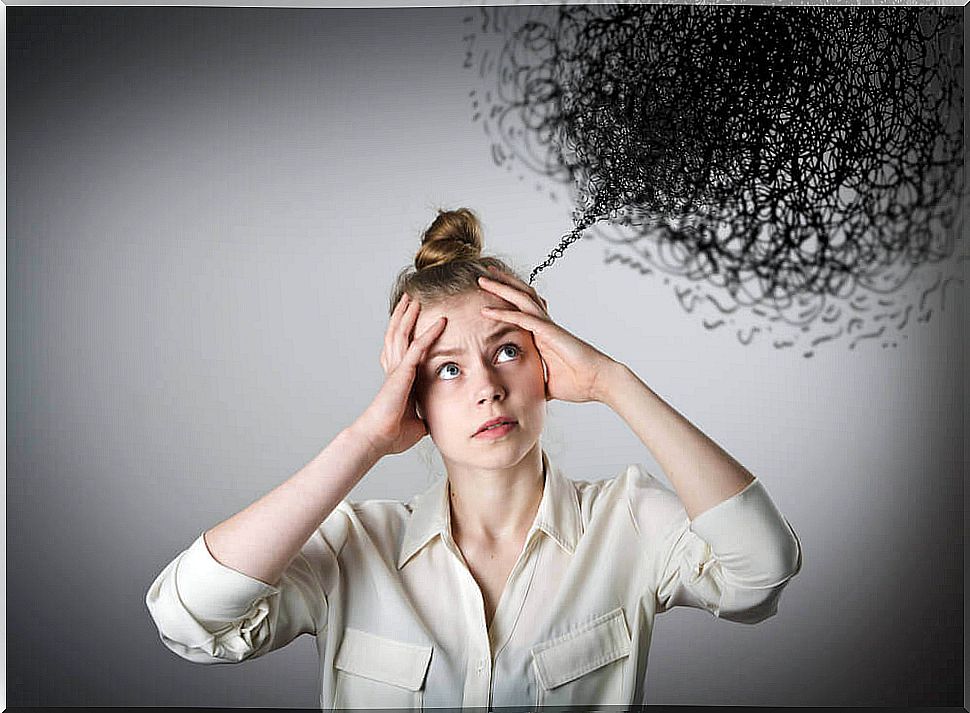Balanced Thinking: A Look Attuned To The World

Balanced thinking allows us to focus on the world without many filters and with a moderate distortion, with authenticity and without getting too mired in prejudices, without the images being very moved by cognitive distortions. Taking and practicing this type of approach would allow us to put aside a wide range of negative elements: from anxiety to those spirals of discouragement that sometimes haunt us.
When we hear the word “balance” several ideas come to mind. One of them is undoubtedly the classic image of someone advancing on a rope stuck in the air trying not to fall, advancing with difficulty but with skillful mastery in order not to rush into the void. His balance, far from being on his feet, is mostly in his mind. This image as such could not be more accurate.
In our day to day, we find ourselves in this same situation many times. Our reality is sometimes chaotic, demanding, complex and even painful. Life is its own tightrope and we are those acrobats who must maintain balance in order not to lose control. Applying a balanced thought is key to achieve this, because from it our emotions also find calm and our “feet” the directionality to allow us to reach a specific goal.
However, it must be said that achieving this is not easy. Our brain operates most of the time unconsciously and through automatisms. These mental shortcuts often derive through many biases, many limiting attitudes and through very rigid schemes that sometimes make us drift towards the extremes. We must therefore assume control and power of our own being to find flexibility and that magical balance that rearranges (almost) everything.

Balanced thinking: finding calm amid uncertainty
An interesting study was carried out a few years ago at the Hamburg-Eppendorf University Medical Center. In it, a group of patients with depression and others with obsessive-compulsive disorder (OCD) were taken and included in a metacognitive training program that lasted one year. The purpose was concrete, as well as challenging: to get these people to tolerate uncertainty, to reduce cognitive distortions, to be able to reflect on their own thoughts and to improve their reasoning processes.
The result of this study was very positive, so much so that in many cases it was possible to reduce the doses of the medications. All of this invites us to conclude with the classic phrase that “thinking well helps us to live better”. Applying balanced thinking is therefore a very useful way to invest in ourselves and an invaluable help in dealing with many of those mental patterns that leave us trapped in black holes. Let’s see now what are those internal processes that tend to take away, precisely, quality of life.
Many of our thoughts are distorted
Anxiety, constant worries, and fears work through negative anchors. We apply them almost without realizing it, focusing on what will happen, on that mistake from yesterday, on something so bad that I think it can happen … This cognitive pattern is often based on a type of mental engineering that is very sophisticated as well as relentless: thoughts distorted. Among them, we can find the following, those that we usually apply more frequently on a day-to-day basis:
- Filtering: we focus attention on negative details to intensify them.
- Polarized thinking : in our reality there are no middle terms, everything is good or bad, black or white.
- Overgeneralization: from the smallest and most insignificant things, we are able to infer tremendous and dramatic conclusions.
- Catastrophic visions: nothing good is going to happen, it is clear that whatever you do, everything will go wrong
- Personalization : any casual event or even everything that others do, think or say, will have to do with us.
- Emotional reasoning : what we feel is what defines us. If we feel like failures, then we are truly irredeemable failures.

Given these thought patterns it is very possible that more than one wonders if to correct this, the ideal would be to “think positive”, to go in the opposite direction. Well, curious as it may seem, this is not the way either. It is not about making use of extreme positivism, of saying to ourselves that “everything is going to be fine.”
How do we apply balanced thinking?
Applying balanced thinking in our day to day will not only reduce the risk of suffering stress, anxiety or falling into the circle of depression. Thinking in a balanced way also improves our coexistence because we avoid making use of “isms”, that is, prejudice, selfishness, fanaticism …
Balanced thinking detaches itself and lets go of many of those internal traps that prevent us from living fully, loving ourselves a little more and also respecting those around us. Let us therefore learn to make use of it.

Keys to applying balanced thinking
The first step is to apply calm. Sometimes we live too fast because we have become accustomed to living automatically, and doing so intensifies the appearance of that “unbalanced” thinking, that is, the one that does not reason, the one that lets go, the one that does not reflect, does not see, he doesn’t appreciate… Let’s slow down, allow ourselves moments in silence and calm.
- The second step is not to make assumptions. Achieving it can cost us, but we avoid as far as possible falling into quick judgments, the use of labels … It may be faster, but it also considerably increases our errors.
- Stop sabotaging us. Let’s say “no” to distort reality and always be the victims. Let’s respect each other, have confidence in ourselves and see opportunities where before we only imagined closed doors.
- Accept uncertainty. Balanced thinking tolerates uncertainty, it does not fear it because it believes that not everything that is going to come is bad, and if it is, we have adequate strategies to face what may happen.
- Do not distort reality, learn to see things as they are, as they occur. Let’s not get obsessed with how we would like everything to be, let’s be more receptive, more humble.
- Trust more in others: do not exclude those who think differently, do not feel superior or inferior to anyone. Practice acceptance and put resentments aside.
In conclusion. We are aware of balanced thinking that is not easy to apply on a day-to-day basis, doing so implies restructuring many shelves of our being, tearing down walls, correcting approaches and allowing ourselves to be a little more “free”. Let us therefore assume this objective as a daily exercise, let us learn to develop a more calm, receptive and balanced approach.









